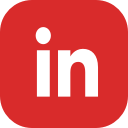Mouse Alum, International High School at LaGuardia Community College
Bachelors of Science, City University of New York-Brooklyn College
Mouse Design Portfolio: Immigrant-ville, Your Path
Apprenticeships: Time Inc., Northrop Grumman, Africa.com, PeopleRev
How did you become involved with Mouse?
Kim immigrated to the United States from the Philippines at the age of 12. Given the challenges facing young immigrants coming to NYC, she chose to attend the International High School, which catered to students who recently came from other countries.
As one of her extracurricular activities, Kim chose to be part of the Mouse program at her school, where she helped teachers with their technology questions. “Being involved in Mouse helped to build my confidence. Teachers saw me as more responsible and selected me as a student ambassador representing my school.
What interested in you in become involved in Design League?
The International High School emphasized project-based learning, so Kim saw Design League as an opportunity to build her digital portfolio. From the first few meetings, Kim felt the strong sense of teamwork and the opportunity to meet students from other high schools across the city.
One of her first workshops was held at IDEO, a firm focused on human-centered design. “Their office space was amazing. There were post-it notes everywhere and I loved learning about the process of designing for others.”
What were some of the projects you designed?
After attending IDEO workshop, Kim and her teammates were inspired to design a project that would make a difference for young people who were also immigrants to this country. “Since it’s about the human experience, we should build something that would help people understand the immigrant experience. It’s life changing to be an immigrant.”
Working as a team, they designed a game called Immigrant-ville. It started when a young person arrived by airplane at JFK and includes steps like getting a Metrocard and finding your path on the subway. “This was the first time that I thought about design and the user experience.”
The following year, Kim designed a project called “Your Path” to help individuals who are visually impaired navigate through New York City. “It felt great to be thinking about how to design technology for someone who is visually impaired. There are so many things we take for granted, like our eyesight. It made me think about technology in a different way -- how I could use my skills to help people benefit from technology.”
How did your experience with Mouse prepare you for your future?
Kim had several internships during high school as part of Design League, including at Time Inc., Northrup Grumman, and Africa.com, through which she learned more about web design, coding and cybersecurity. “These internships gave me insight into the professional dynamics of a workplace. I learned how to interview and the importance of networking with people.”
In college, Kim majored in Industrial and Organizational Psychology. “Psychology is relevant to all of us. I chose this major to build upon what I experienced in Mouse and school: to use technology to have more impact on an organization.”
Tell us about your current professional role?
After graduating college, Kim was offered a position as Project Lead for Human Resources at Lifion, a special venture within ADP. Kim is involved in many projects, including providing UX feedback for a new human capital management (HCM) platform they are developing. “I developed my foundations in technology, learned how to work as a team, and felt more confident connecting with people. I wouldn’t be in this industry if it weren’t for Mouse introducing technology as an option for women.”
Kim credits her experiences with Mouse with her interests in the human-centric side of technology. "I realized that the importance of technology is how you can positively impact people.”
What your thoughts about diversity in the technology field?
Kim sees the impact of having more diversity in her current professional role. “Diversity provides different intellectual dimensions and perspectives. Diverse ideas and approaches make us more innovative as it challenges our thinking. Empowering minorities, such as women, and promoting them in leadership roles is important as many are capable to do the same things as men, especially in technology.”





